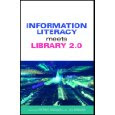
Ku Klux Klan warning
The 1913 capital murder case of Leo Frank[1] is a wonderful way to explore Brooklyn Law School Library’s digital resources.
To some this murder trial is known as the “Murder of Mary Phagan,” others call it “The Trial of Leo Frank.” It involves an Atlanta Jewish factory supervisor convicted of murdering a teenage girl who worked at his plant.
Prosecutor Hugh Dorsey faced defense attorneys Luther Rosser and Reuben Arnold in the trial that began on July 28, 1913. You can read Hugh M. Dorsey’s argument[2] and Reuben R. Arnold’s address[3]to the court. These transcripts are part of Hein Online’s World Trials Library.
The Leo Frank Trial was marked by sensational press coverage. Public sentiment in Atlanta turned strongly against Frank. The defense requested a mistrial because it felt the jurors had been intimidated, but the motion was denied. In case of an acquittal, the judge feared for the safety of Frank and his lawyers, so he brokered a deal, Frank and his lawyers would not be present when the verdict was read. On August 25, 1913, Frank was convicted of murder.
Frank became the only known Jew in history to be lynched on American soil. After a series of unsuccessful appeals, the Governor commuted Frank’s sentence to life. But Frank died a violent death at the hands of mob violence. For information about the Leo Frank Trial consider an Hein Online e-book from the World Trials Library entitled The truth about the Frank case by C.P. Connolly.[4]
Frank applied for clemency from the departing Governor of Georgia, John M. Slaton. Convinced that Frank was innocent, on June 20, 1915, Slaton commuted Frank’s sentence to life in prison, “assuming that Frank’s innocence would eventually be fully established and he would be set free.” On August 17, the “Knights of Mary Phagan” kidnapped Frank from his prison farm and lynched him. Frank’s body was eventually transferred to an undertaker and buried in the Mount Hebron Cemetery in Flushing, New York.
The history of the Klu Klux Klan can also be found in digital resources. The Klan history in the United States has two periods. The history of the first period can be found in an Hein Online e-book from the World Trials Library entitled Ku Klux Klan: its origin, growth and disbandment.[5] According to CQ Press, the Klan was founded in 1865 by Tennessee veterans of the Confederate Army.[6] Groups spread throughout the South. Its purpose was to restore white supremacy in the aftermath of the American Civil War. The Klan resisted Reconstruction by assaulting, murdering and intimidating freedmen and white Republicans. In 1915, the second Klan was founded, the same year Leo Frank lost his Supreme Court appeal and was lynched.
Finally, CQ Press’ Times Reference[7] reminds us of the importance of Franks habeas corpus appeals to the Supreme Court. The case of Frank v. Mangum, 237 U.S. 309 (1915)[8] marked a change in the way the Supreme Court of the United States (SCOTUS) approached state court criminal convictions. Although the majority denied Frank’s habeas, Justice Oliver Wendell Holmes issued a pointed desent. He stated “habeas corpus cuts through all forms and goes to the very tissue of the structure. It comes in from the outside, not in subordination to the proceedings, and although every form may have been preserved, opens the inquiry whether they have been more than an empty shell.” [9] You can review Frank’s habeas brief through Hein Online’s World Trial Library.[10]
[1] The truth about the Frank case , C.P. Connolly, New York, N.Y. : Vail-Ballou Co. c1915, http://sara.brooklaw.edu/record=b248351~S0.
[2] Argument of Hugh M. Dorsey, Solicitor General, Atlanta Judicial Circuit, at the trial of Leo M. Frank, charged with the murder of Mary Phagan, Hein Online World Trial Library, Atlanta, Ga. : Johnson-Dallis Co., 1914?,http://sara.brooklaw.edu/record=b248298~S0.
[3]The trial of Leo Frank: Reuben R. Arnold’s address to the court in his behalf / introduction by Alvin V. Sellers, Hein Online World Trial Library, Atlanta, Ga. : Johnson-Dallis Co., 1914?,http://sara.brooklaw.edu/record=b248298~S0.
[4]See Note 1.
[5] Check out this Hein Online title through the BLS Library catalog http://sara.brooklaw.edu/record=b248195~S0. Ku Klux Klan: its origin, growth and disbandment, J.C. Lester and D.L. Wilson; with appendices containing the prescripts of the Ku Klux Klan, specimen orders and warnings; with introduction and notes by Walter L. Fleming, New York, N.Y. ; Washington, D.C.: Neale Pub. Co., 1905.
[6] “18. Reconstruction (1865-1877).” CQ Press Electronic Library, Political History of America’s Wars Online Edition, polhis-ch18. Originally published in Alan Axelrod, Political History of America’s Wars (Washington: CQ Press, 2007). http://library.cqpress.com/phaw/polhis-ch18.
[7] “Early Developments.” CQ Press Electronic Library, TimesReference from CQ Press, nytsc-1079-48278-2099407. Originally published in Kenneth Jost, The New York Times on the Supreme Court, 1857-2008, TimesReference from CQ Press series (Washington: CQ Press, 2009). http://library.cqpress.com/tr/nytsc-1079-48278-2099407.
[8]Frank v. Mangum, 237 U.S. 309 (1915). Use Hein Online Supreme Court Library to locate the digitial version of this opinion.
[9]Frank v. Mangum, 237 U.S. 309, 347 (1915).
[10] Leo M. Frank, appellant, against C. Wheeler Mangum, Sheriff of Fulton County, Georgia, appellee: Appeal from the district court of the United States for the northern district of Georgia / Appelant’s argument. Louis Marshall, Henry C. Peeples [and] Henry A. Alexander, Apellant’s Counsel, Supreme Court of the United States, October term, 1914,[S.l.] : Supreme Court of the United States, October term, 1914?, http://sara.brooklaw.edu/record=b248266~S0.





 The library has a limited number of resources on information literacy in the internet age. See
The library has a limited number of resources on information literacy in the internet age. See 